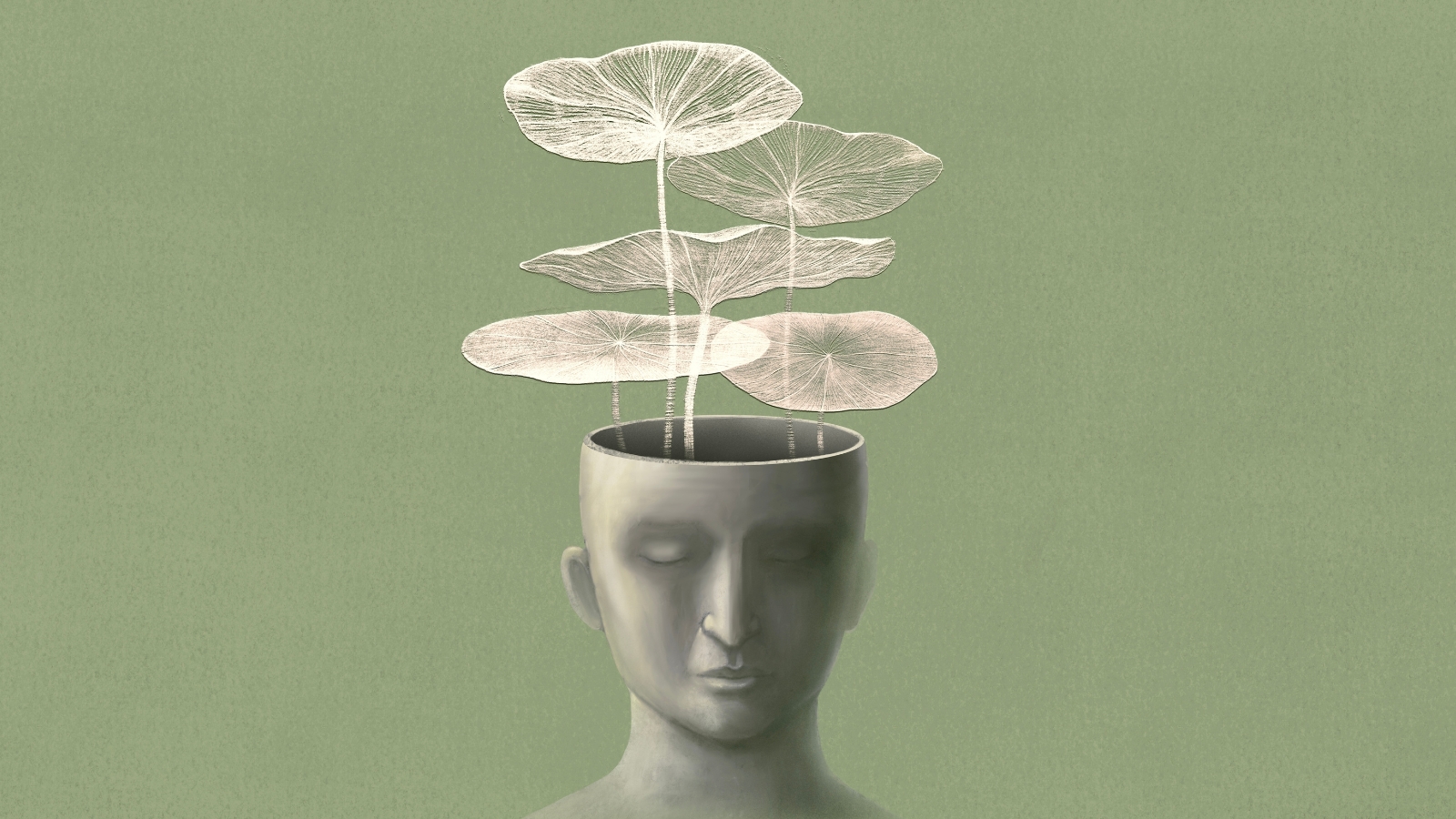If you ingest a substance like cannabis for recreational purposes on a daily basis, you are likely to be called an “addict.” Yet “supplementing” or “medicating” with these same substances in the well-being and healthcare sectors automatically normalizes these behaviors. Many of us are “addicted” to or dependent on coffee in this way.
Both natural and synthetic substances may be highly refined and consumed excessively or habitually in ways that may be deemed unhealthy. “Drugs” could also be replaced by “activities” that are pursued to excess—including shopping, gambling, and eating.
Given that every medicine is a poison depending on dose and context, recent clinical trials have sought to investigate the therapeutic window of exciting new compounds like psilocybin. For example, it has been found that “psilocybin-occasioned mystical experiences may facilitate the treatment of tobacco addiction.”
However, the addictive compound in smoking is nicotine, not tobacco—and this same substance is used to wean people off smoking. As well as this, in its traditional context, tobacco was once a medicine itself, and you can often find ritualized rapéh (or hapé) ceremonies taking place around London.

The New Science of Addiction
This raises interesting questions such as—what do we mean by “mystical” experiences? In successful treatment programs such as the AA: what is the role of faith, communitas, and placebo responses in addressing addictive patterns? Where is the line between too little and too much or healthy and unhealthy? And how might psychedelics succumb to the same commercial fate as compounds like tobacco?
The Clinical and Commercial Context of Substance Use
A contemporary example is practices with the rise of medical cannabis clinics. This is an off-label treatment that’s often prescribed as a last resort in private care. However, a narrative discrepancy exists inside and outside of the medical context. When treatment regimens begin to plateau, patients are often encouraged to increase their dose in order to address the symptoms of an “underactive endocannabinoid system.” In some cases, these same symptoms are likely to be seen as “withdrawal effects” outside of the medical or well-being market.
We have seen similar situations play out during the opioid epidemic in which companies such as Purdue Pharma, owned by the physician family, the Sacklers, exploited these narrative discrepancies to push increasing doses of “non-addictive” prescriptions.
The medicalization of emotional and mental needs in order to meet cultural standards is nothing new. But contextually-dependent narrative changes like this force us to reconsider the role of the mind-body connection in exploring concepts like “addiction” and “psychoactivity.” When it comes to the science of living “well,” the literature increasingly implores us to ask—for whom? In what way? In which context(s)? And to what ends?

Mind-Body Medicine: Rewarding Rituals
The definition of “psychoactivity” is “adjective (chiefly a drug) affecting the mind.” Alcohol, coffee, and tobacco have all been illegal in the past—however, there is little in life that doesn’t affect our minds, from the relationships we foster to the entertainment that we consume.
Hallucinogens are unique in that they instigate experiences that noticeably take us outside of “ordinary waking consciousness,” but we can also shift our brain waves into altered states through mind-body practices like breathwork and meditation.
Historical Use of Psychoactive Substances
Mind-altering or amplifying substances have been used in various ways throughout history: as medicines, sacraments, and status symbols, to investigate the brain, to inspire works of art and encounter the divine, or simply as an escape from the experience of being oneself.
The Nature and Nurture of Substance, Set and Setting
When it comes to the mind aspects—we must consider the impacts of cultural conditioning or nature and nurture at a societal level (the macro context), alongside the impact of “set and setting” or mindset and environment (the micro context); The body aspects involve the neurobiological impacts of the substance itself.

The Placebo Paradox and Psychedelic Therapy
These subconscious influences are illustrated by the greater effectiveness of brand-name painkillers over unlabeled sources of the same drug in placebo effects. This demonstrates that drug effects are as much a part of the ritual as the reward, i.e., they are as much a part of the mind as the body in terms of relating existential experiences (expectancy and conditioning) to their neurological foundations (physiological effects).
The prevailing clinical treatment paradigm for addiction is psychosocial intervention with adjunctive pharmacotherapy (mind and body are still treated as relatively separate), and these interventions demonstrate limited success.
There is a growing body of evidence for the therapeutic effect of mind-body practices and psychedelic intervention in treating addiction, including 5-HT2aR agonists (classic psychedelics) and non-classic psychedelics such as ketamine and ibogaine.
Important gaps in existing knowledge include 1) the relationship between short-term drug effects and longer-term clinically relevant effects, 2) how these effects relate to 5-HT2A receptors, and 3) what impact this has on neuroplasticity.

Psyche-delic Paradigm Shifts
Furthering our understanding in these 3 key areas could enable more targeted and personalized treatment approaches with sustainable outcomes. Since many forms of mind-body practice, such as meditation, stem from ancient spiritual cultures, some feel there is also a need to bridge experimental investigations with philosophical and experiential approaches—as discussed in the traditional literature. This would challenge dominant perspectives of disease, health, and wellness within our own medical culture.
The “placebo paradox” is that the efficacy of placebo, when it has any, depends upon the belief of the patient that the offered treatment is appropriate to the presenting condition—but it seems contrary to the spirit of contemporary medical practice to deceive patients. The placebo paradox of psychedelic medicines is that it’s almost impossible to deceive control groups into thinking they have received a high dose of hallucinogen when they have not, and placebo is also an “altered state of consciousness” (ASC) in itself.
This inter-relationship between evidence and belief further indicates the possibility of bridging a psychedelic model of medicine with a medical model of psyche-delics. The former is intra and inter-personal (relational); a dynamic and reciprocal nature-nurture framework that forms a core component of the “ceremonial” context inherent to mind-body modalities, which register altered or expansive states.
Ethical Approaches to Neuroethics
As psychedelics are still touted as being “non-addictive,” this is an interesting multidisciplinary area of investigation with insightful ramifications. However, as with studies investigating CBD or Cannabis intervention in patients with schizophrenia, we should be wary of the ethical implications—the relationship between cure, cause, and effect remains dynamic and unclear.
Informed consent is not possible with patients deemed to be lacking “compos mentis”, and current clinical trials in psychiatric care are justified under the notion that experimental intervention is better than the current quality of life; However, many practices that are now outlawed, including lobotomy, started life this way.

Faith in the Facts: What Constitutes Use, Abuse and Acceptance?
Historical attitudes have shaped societal views of mind and consciousness-altering substances, as well as policy perspectives on the management of drug problems. There is evidence that prohibition contributes to ineffective approaches focused on drug supply interdiction and persecution of users over provision of adequate prevention and rehabilitation services.
Altered states of consciousness have perennial roots of concern in psychology, philosophy, religion, and the spiritual disciplines—the impulse towards altering consciousness and towards transcendence of the every day and the ordinary may be rooted in human nature.
The construction of addiction and its causes across time and cultures has varied widely. Protestant (Calvinistic) conceptions of addiction have provided the roots of the modern view in the West. This Reformation perspective of addiction as a moral failing was succeeded by different phases leading to the institutionalization of the modern medical concept. However the main ingredients have remained the same.
Science a(nd) Religion
The addict of Reformation times was defined as ill because he did not live a holy life; the addict of the Industrial era is often defined as ill because he does not meet standard norms such as productivity, functionality, and success—the keywords both of Calvinism and Capitalism. By WHO standards, the term “addiction” was officially replaced by “dependence” in 1974 because of its negative connotations, but the two terms are used virtually synonymously.
Drug-related behaviors and experiences such as physical and psychological dependence (requiring the drug to function), tolerance (requiring increasing doses of the drug to achieve the same effect), abuse, withdrawal syndromes (negative symptoms after discontinuing the use of the drug), craving, and the cognitive and psychotic disturbances used in DSM-IV for diagnostic purposes remain vague.
This is partly because they are tied to substance strength and industrial processing, as well as socio-economic factors. On a personal level, addiction can be defined as a chronic, compulsive need to engage in a behavior despite its harmful effects and/or the individual’s wish to stop.

Cultural Shifts in Substance Use
Treatments that produce ASC have shown promise in various substance use disorders, but the nature and strength of this remains unclear. While definitions of ASCs vary, a functional shift in mindset often involves a “change in the overall pattern of subjective experience,” a “qualitative… not just quantitative shift,” and a “sufficient deviation” within a wide range of mental functions, and crucially within “Primary Consciousness.”
That is, ASCs are a noticeable (often dramatic) and qualitative alteration to the fundamental “fabric of awareness,” typically accompanied by alterations in perspective and cognition.
According to the general model of ASCs, a resultant physiological shift is a function of the internal set and external setting, regardless of the catalyst or trigger, which might be a drug, hypnotic induction, shock, rhythmic sounds, music, and so on. ASCs differ energetically on the dimensions of (a) arousal versus sedation, (b) pleasure versus pain, and (c) expansion versus contraction (embodied responses).
Investigating Psychedelic Effects on Behavior
It is argued that the classical hallucinogenic or psychedelic drugs are “non-addictive” as they are consciousness-expanding, and therefore opposite in effect to drugs like opiates, alcohol, cocaine, and amphetamines—which are considered to lead to addicted, fixated, contracted states of consciousness (obsessive, repetitive and habitual patterns centered around the next “fix”).
In moderate doses, these substances, which primarily affect the dimensions of arousal and pleasure/pain (stimulants and depressants) without significant expansion of consciousness, are frequently referred to as psychoactive (or “mood-regulating”) instead.
In this sense, current research is inquiring into the effects of psychedelic drugs on sustainable behavior and decision-making—investigating whether psychedelics’ ability to elicit self-transcendent emotions and feelings of connectedness to nature can be used to study key processes that may elicit transformative changes in human cognition and behavior which are not only related to personal health but also towards environmental sustainability. They primarily elicit experiences that affect our worldviews and meaning-making capacity.

Existential Shifts: Contracted to Expansive
Psychologist Ralph Metzner described the effect of drugs on contracted and expanded states of consciousness using a circle model of “potential awareness.” Awareness and attention can be thought of as a kind of beam that can focus on a very narrow point or can take in a much wider range of the total circle of potential consciousness.
In terms of this 360° circle of potential awareness and attention, a usual baseline state of consciousness might engage 30° to 60° —consciousness is constantly undergoing periodic fluctuations during the 24-hour circadian cycle, shifting between waking, sleeping, and dreaming.
Dependence is seen as a contracted state of consciousness that manifests as compulsive behavior, which is fixed and repetitive. The addictive lifestyle becomes more and more ritualistic and restricted, and attention and behavior become isolated from interpersonal and occupational relations. Some ASCs, such as transcendence and ecstasy, involve an expanded awareness of consciousness that may exceed the normal baseline condition of awareness, exemplified in “mystical” experiences of connection with nature and the universe.
Naturally Induced Modulations of Consciousness
These fluctuations of consciousness are seen as natural and inevitable, with health, well-being, and creativity linked to the ability to tune into and utilize both spontaneous and induced modulations of consciousness.
Dependence, compulsions, and attachments are an extreme of normal experience but an inevitable part of it, beginning with mother-infant bonding. Attachments, whether or not they involve drugs, involve an autonomic narrowing of focus. This disposition to fixate can also be useful or beneficial where there is a need to reduce pain, fear, and anxiety.
Psychointegrators and Spiritual Insights
Under the influence of psychedelic substances, which interdisciplinary researcher James Winkelman calls “psychointegrators”, people can acquire spiritual insight, learn to recognize and identify their own restricted and destructive patterns of behavior and switch to new perspectives.
The association of drug addiction with our drive to seek ASC involves a common biological basis in the brain for rewarding experiences, particularly in relation to others. The concept of meaningful social connections links spiritual states and our addictions to our deep-seated need for social bonding, a function of our paleomammalian brain where opioids are found.

Mindful Regulation: Motivating Meaning
At the center of neurobiological theories of addiction is the concept of the endogenous reward system. Endorphins are neuropeptides that dock at various kinds of opiate receptors in the brain and modulate emotions and motivation. Another system involves endocannabinoid receptors which increase the release of dopamine—cannabis-use activates these receptors in a similar way to mind-body practices.
Chronic Drug Use and Brain Changes
Other substances like cocaine, amphetamines, and MDMA also lead primarily to increased dopamine in the reward system. Drugs act directly on the neurotransmitter systems of the brain; therefore, the remaining drug memory trace is relatively strong. Equally, if this reaction has become associated with a certain substance, relationship, cue, or lifestyle, it arouses a state-dependent recall (conditioning), and the desire or craving (the narrowed scope of searching for satisfaction or relief) starts again.
Many of these cues and incentives are shaped by culture. Classical psychedelic therapies, which come with their own cross-cultural legacies and contemporary containers, are predominantly serotonin-based and focus on communitas. They demonstrate potential as part of a process that links isolated and addiction-prone individuals into broader social and symbolic networks, which may provide meaningful connections that assure well-being and self-comfort in ways that preclude the need to rely on external sources of chemical reward for this sense of relief and connection.
Mindfulness Practices and the Default Mode Network
Over time, chronic drug use may induce brain changes that increase sensitivity to drug-related cues and decrease sensitivity to natural rewards. This can result in anhedonia and a blunted baseline state. Mindfulness practices are a popular method for regulating emotions and cultivating long-term brain changes. According to the Mindfulness-to-Meaning Theory, these therapeutic processes hypothetically “reset” the default mode network (DMN) dysfunction that undergirds addictive patterns.

Recovery and Self-Transcendence
Along with environmental changes like an improved sense of connection to friends, community, and nature, they do this by disrupting schematized, self-referential appraisals (e.g., “the only thing that makes me feel happy is getting high”) and helping individuals embrace new experiences that generate new existential beliefs (e.g., “Recovery from addiction has brought meaning back to my life”).
This meaning-making process may reach its apex in “self-transcendence” —the experience of interconnectedness or “oneness” with something greater than oneself. This is classically held to be the sine qua non of addiction recovery (e.g. surrendering to a higher power in Alcoholics Anonymous).
Though self-transcendence can arise spontaneously during awe and other naturally occurring peak experiences, it can also be instigated by contemplative practices that foster the experience of “nondual awareness.” This is similar to the patterns of connectivity observed during reported experiences of “ego dissolution” on psychedelic drugs.
In this sense, both psychedelic drugs and psychedelic practices leverage the complex interplay between mind and body to create shifts in physiology and perspective that affect behavior. These effects, however, can either be expanded or contracted by the constraints of the environment. Broadly speaking, higher levels of well-being are correlated with improved socio-economic factors and prospects for living a long and happy life.

Revisioning Recovery
All substances offer benefits and extract costs in a ratio that varies between individuals and across cultures and is constantly adjusted relative to a shifting ‘norm’ over time. The ratio is markedly more positive in some substances than others, but it seems that it may never be reduced to a definitive medical or biochemical calculation: it is determined by form and dose, trade regulation, competing interests, and the psychological or cultural containers within which it unfolds.
As such, as much as there is a need to focus on clinical trials and medical evidence, there is also a need to ask what we collectively value, and how we as a society create meaning in life. What will be our shared vision and legacy of “progress?”















